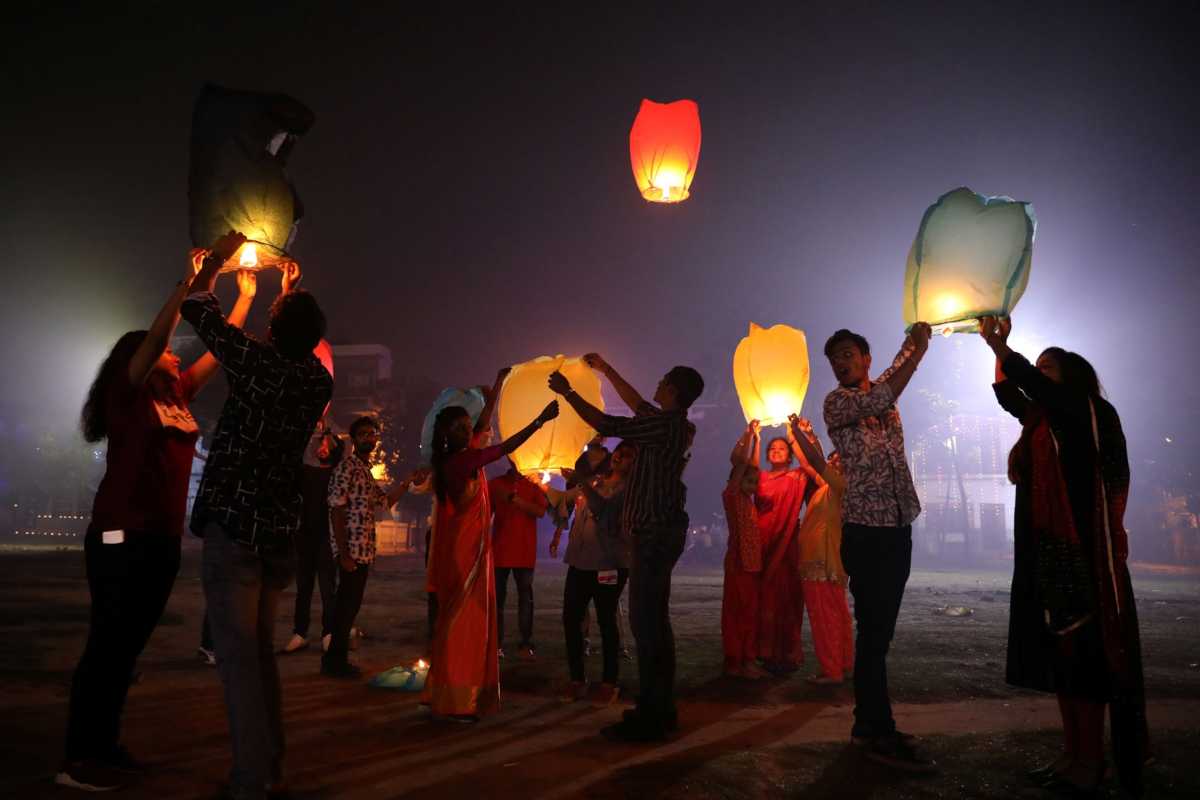World
Diwali Celebrations: The Festival of Lights

Diwali, also known as the Festival of Lights, is being celebrated by Hindus, Sikhs, Buddhists, and Jains worldwide on November 12. This five-day event is marked by vibrant lights, incense, and delicious meals. Families who may be separated come together to celebrate.
The word Diwali originates from the Sanskrit words ‘deepa’ (lights) and ‘avali’ (row), translating to ‘row of lights’. Diwali is characterized by various lighting decorations, including fireworks and candles. The most iconic decorations associated with the festival are diyas, traditional earthen oil lamps.
The significance of diyas can be traced back to the Hindu legend of Ramayana. It tells the story of Lord Rama and his wife Sita, who were welcomed back to their kingdom, Ayodhya, with the illumination of diyas after their victory over evil forces. Diyas symbolize the triumph of good over evil, a common theme across different communities celebrating Diwali.
Manpreet Arora, a senior assistant professor at the Central University of Himachal Pradesh, shared her insights on Diwali. She emphasized the role of women in Hindu festivals, reflecting on her experiences as a child helping her mother prepare for Diwali festivities. Preparations for Diwali often involve cleaning houses, buying new items, and ensuring they are pristine to welcome the goddess Lakshmi into the homes.
The celebrations begin with Dhanteras, the first day of the five-day festival. On Dhanteras, markets are bustling with people purchasing various items, ranging from diyas to luxury products. Silver jewelry and utensils are particularly sought after on this auspicious day, believed to bring good luck and fortune.
The main day of Diwali falls on the new moon and is marked by the lighting of lamps and worshipping of Goddess Lakshmi. Traditionally, noise is created using drums and firecrackers to drive away Alakshmi, the negative shadow associated with Lakshmi. However, concerns about pollution have led to a growing movement of practicing a ‘green Diwali.’ The government encourages people to avoid firecrackers and promote local artisans by purchasing handmade diyas instead of mass-produced ones.
Rangoli, the art of drawing patterns on floors and surfaces, is also a significant aspect of Diwali. Using materials like colored sand, rice flour, or powdered limestone, intricate designs are created to welcome Lakshmi. Different rangoli motifs carry various meanings, such as the lotus flower representing wealth and fertility, and owls symbolizing auspiciousness in Bengal, where they are believed to be Lakshmi’s vehicle.
Diwali is a vibrant and culturally rich festival that brings communities together to celebrate the triumph of good over evil and light over darkness.












